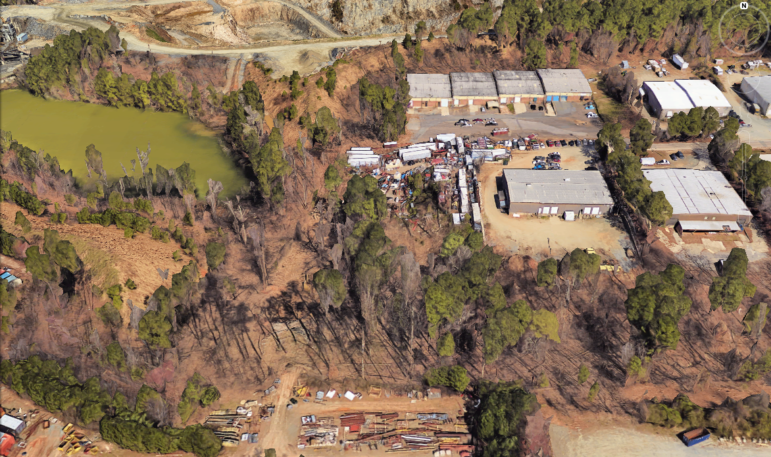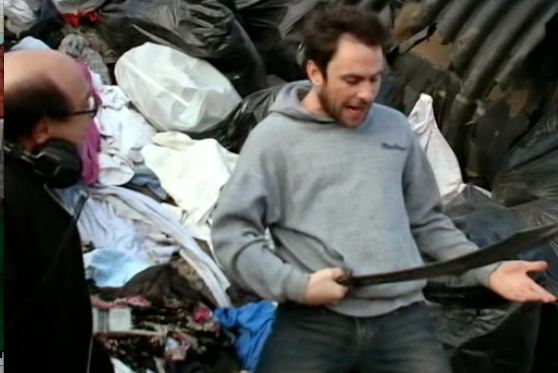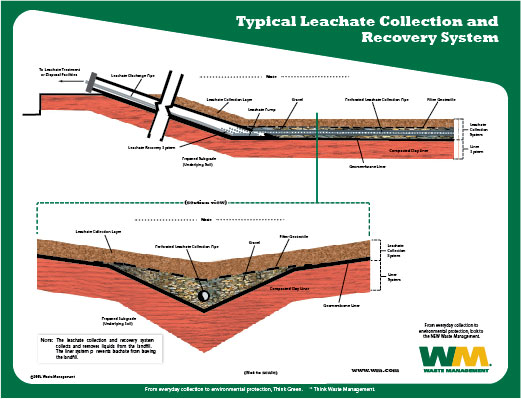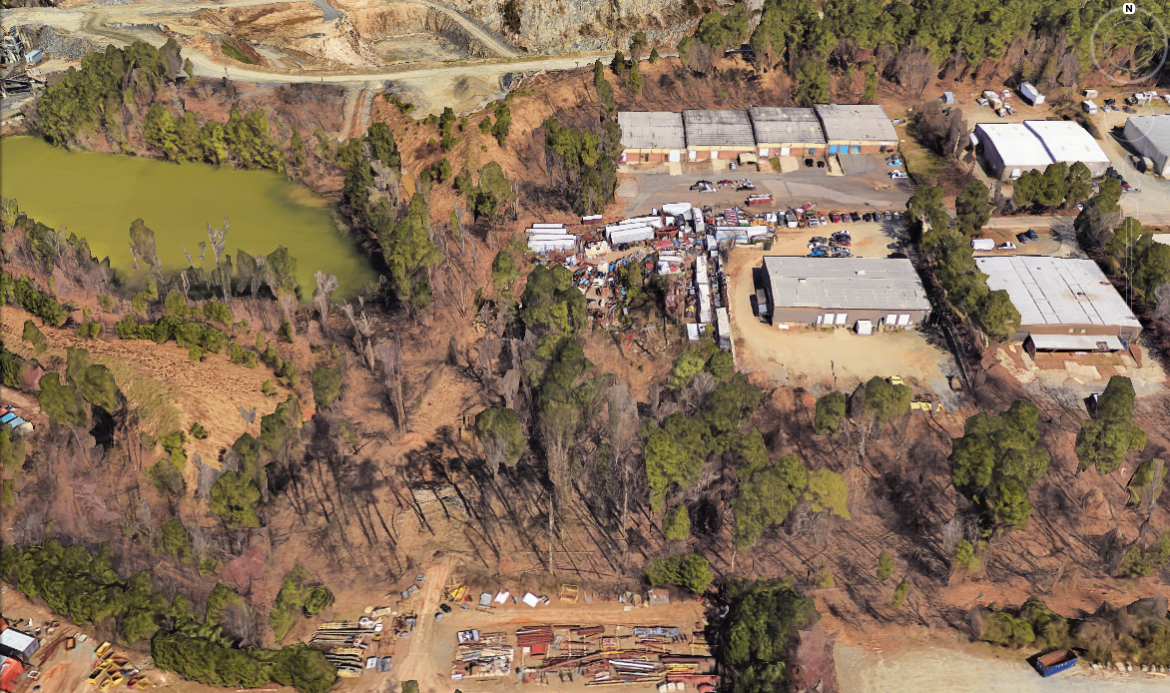Brought to you by Rufty-Peedin Design Build
Thursday, August 4, 2016
If you don’t build it, they will still come to make sure you have the proper permits.
Plans to turn a vacant parcel of land in Northwest Raleigh into a…vacant parcel of land required the filing of formal site plans last month by property owner Commercial Cleanup & Dumpsters, LLC.

Google Earth
The site is located roughly between the pond on the left and the buildings on the right
The 2.93 acre property in question, located at 5804 Triangle Drive off Glenwood Avenue and just outside of the Brier Creek area, has been owned by CC & D since 2003. The scope of work described on the site plans states simply that the plan is to change the land category from “vacant” to “heavy industrial” but notes that “no buildings are existing or proposed.”
The land, like nearly all the surrounding parcels, is zoned industrial, a land classification that allows for a range of development types. We’ll list a few; see if you can guess which might be the best fit for an owner that specializes in commercial cleanup and demolition.
Permitted uses in Industrial-1 districts: General manufacturing, wholesaling, warehousing and other industrial uses; indoor and outdoor recreation; landfills; quarrying; transportation terminals; wrecked, dismantled car storage (Board of Adjustment), outdoor storage yards (Board of Adjustment); private penal facility (City Council).
Give up? Our first guess was “private penal facility” but since the site plans clearly state there won’t be any new buildings added to the property, we had to rule it out. So landfill is the more likely use.
In addition to the whole site plan approval process, CC & D has some work to do before they begin using the site as a place to dispose of what we assume will most likely be construction-related waste materials. Before we dive into those fascinating details though, there’s something we should probably clarify.
Most people, myself included, picture a giant dump site (like the one pictured below) full of a vast array of untapped treasures when they hear the word “landfill.” As it happens, landfills, like the one that appears to be planned for this site, bury the garbage between layers of soil and are heavily regulated by the government to ensure the surrounding land and water table underneath are kept safe. Dumps are more of a free-for-all.

Always Sunny in Philadelphia
Bro, you could chop a camel right in the hump and drink all of its milk right off the tip of this thing!
Landfills come with leachate collection systems and a liner at the bottom to trap any liquid released by the waste materials. While the liner is pretty self-explanatory, we don’t imagine most of our readers are familiar with a leachate collection system. Basically, leachate is that liquid run-off we just mentioned, liquid that often contains “significantly elevated concentrations of undesirable material.” The leachate collection system drains that liquid out of the liner for storage/treatment/disposal elsewhere.
In addition to these and other environmental protections, work at the site will also include the removal of existing aggregate paving and existing vegetation. The paving & vegetation will be replaced with pine straw, ideal for mulching, and Bermuda sod, a grass type often found in landfills due to its durability and drought-resistant features.
Interestingly enough, Bermuda grass itself is not native to Bermuda and is considered an invasive species there. It actually originated in the Middle East.
While landfills are certainly not the most environmentally desirable land use, the improvements made to the design of and regulations of these sites has improved significantly over the years. A good local example is the Dorothea Dix Campus, for which the City recently bid out an environmental cleanup job.
We’ll be covering this project in more detail next week, but the whole reason this cleanup is required is because the area being remediated was once used as an essentially unregulated dumping site for contaminated soils. Fun stuff.

